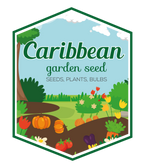
ALOE Seeds (Aloe arborescens) Flowering Succulent
FAST & FREE SHIPPING
Over 90% of our orders are processed and ship out by next business day.
We are currently processing and shipping most orders within 1-3 business days. (backorders not included) Due to high demand during the peak months of January to May, orders may require additional time for packaging /shipment.
Free shipping for orders over $54.95. Excludes live plants, fresh products And Stackable Black Plastic Nursery Crate
Shipping and handling charges will cover outbound freight and packaging materials. Fees are applicable to all orders, based on total order value pre-tax. Expedited services can be selected at Checkout with extra fees.
- Free shipping to lower 48 states on orders $54.95+
- (Most Items), excluding live plants, plant bulbs, and black plastic nursery crate.
- Safe Seed Pledge
- Satisfaction Guaranteed
- Select your desired size and/or color from the available options.
TREE ALOE Seeds (Aloe arborescens) - PERENNIAL MEDICINE PLANT
Aloe arborescens. Sunset: 8-9,13-24; USDA: 9-11. Light shade in hot gardens. Moderate water summer. Heat tolerant. Hardy to 25° F. Clustering rosettes becoming a large shrub, up to 16' tall. Dormant during winter. Orange / Red flowers. Origin: Coastal southern Africa.
Aloe arborescens, Krantz Aloe)
Family: Asphodelaceae
Hardiness: to 22 degrees F.
Perennial succulent native to South Africa. Growing up to 8 feet tall, the plant flowers coral-red in the fall and/or winter. Plants produce one or more upright stalks with the showy rosettes perched on top, leaves rimmed by large, soft and harmless spines, filled with gel, also laden with the yellow anthroquinone known as "aloin." Like Aloe Vera, Aloe arborescens is a preferred species for production of aloe gel, which contains alantoin and speeds healing of open sores, cuts and scratches quite noticeably. Great for treating sunburn. Aloe arborescens is listed in "Aloes of South Africa" as one of the four main species used medicinally. The leaves of the plant, containing both the anthraquinone-laden underskin and the gel, are used in making anticancer medicines for treating advanced stages of cancer--after metastasis. This activity is attributed to 3 different mechanisms: antiproliferative, immunostimulatory and antioxidant. Here is a link to more information about the active constituents in Aloe arborescens and its use in treating cancer http://www.aloearborescens.org/SciResearch4.pdf
Aloe arborescens is an excellent choice for potted culture anywhere, or outdoors culture in maritime California, desert areas and the South. When left in potted culture, keep indoors in a bright window, in the shady greenhouse or on the porch in the summer, then bring in for the winter. Drought tolerant, but also, among the Aloes we've grown, more tolerant of cold and "wet feet" than most. "Krantz" is the Afrikaner word meaning "cliff" or "rocky ledge," referring to the natural habitat. Plant prefers dry to mesic soil and full sun to part shade. Sow seed in regular greenhouse conditions. Probably ok to start them on a windowsill, although high temperatures and humidity do encourage germination. Planted in the right conditions, these seeds give high germ rates. Use a pot or a deep flat filled with Cactus mix. Sprinkle seed on surface and cover with 1/8 inch of sharp, coarse sand or grit. Lacking sand or grit, you can cover with cactus mix, or very small pea gravel. Tamp well and water once or maybe twice daily, keeping warm and somewhat shaded. A shaded bench in the greenhouse is ideal--we're looking for filtered light here, not heavy shade. Germination occurs in 1 to 3 weeks, the little succulent leaves pushing up through the grit. Seedlings of Aloe arborescens make a very long first leaf--about 1.25 inches, before pushing out the second leaf, which appears stubby at first, and then elongates. Keep seedlings warm, somewhat shaded and water a bit more sparingly (once every three days), allowing the surface to dry out between waterings. Grow seedlings closely together for 3 months to a year, then individuate to pots. To plant (any) Aloe, first cover the hole in the bottom of the pot with a pot shard, put a layer of sand in the bottom of the pot (2 inches or so deep), then a 2 inch or so layer of compost or any kind of humusy potting soil will do, then finish off with more sand on top of the compost. Plant the roots of the aloe seedling down through these layers, and leave the succulent barely nestled down into the top layer of sand, tamping all around to hold the seedling firmly upright. Do not water after transplanting--leave the plants for a week or 2 without watering at all. The seedlings will send down roots at this time, roots that would be discouraged by the presence of too much moisture. Once the plants have rooted in, water once a week or so during the summer, but then more or less discontinue watering during the winter. Aloes do best in a shaded greenhouse or indoors on the windowsill with a northerly or easterly exposure. Aloes live on and on.
., Open Pollinated
HOW TO GROW GUIDE
LET OUR CUSTOMER SPEAK FOR US

![[Seeds] - Caribbeangardenseed](http://caribbeangardenseed.com/cdn/shop/files/gift-card-gift-card-1_1024x1024_dfa857db-9150-4315-a362-7f0bb3fb9c47_60x28.png?v=1722895789)







